Mikhail Sergeyevich Gorbachev died at 91 in Moscow, lionized in the West and widely despised in his own country. Conservative talk show hosts here mocked the Western media obsession with the dynamic young Soviet leader. Rush Limbaugh called their reporting gorbasms.
But he was different from all his predecessors. He began his rule in the USSR with a campaign against alcohol. It was the plague of Russia. The people’s bitter joke asked: What comes between Socialism and Communism? Alcoholism. Also doomed to failure were Gorbachev’s policies of perestroika (re-structuring) and glasnost (openness).
One of the first questions to be posed under openness was obvious: If Marxism is scientific and if the dictatorship of the proletariat by the Communist Party is non-negotiable, why does the unworkable system the party created need to be wholly re-structured?
Gorbachev knew how cruel the Soviet system was. His own family had come close to starving under Stalin’s farm collectivization ukases of the 1930s. He was the darling of his grandparents in his rural village—and his grandfather died under Stalin.
I knew how threatening it was, too. When I boarded Soviet trawlers in the Bering Sea, I felt it. It was the rule of fear. I could read the crude posters on bulkheads. They had been approved by Glavlit, the Soviet censorship organ. Freshly minted in Moscow, these brightly colored propaganda placards showed Uncle Sam being bayoneted by “people’s militia” in Angola.
Then I heard U.S. Secretary of State Cyrus Vance inform us that Soviet dictator Leonid Brezhnev “shares our deepest values,” Like the young Gorbachev, I was disillusioned with my own country’s leaders.
Ronald Reagan was the answer to Cy Vance’s fatuous notions. Reagan began his sessions with national security adviser Richard Allen. Before he opened his massive briefing books, Reagan told Allen his view of Democracy versus Communism: “Before you start, always remember: We win; they lose.”
Reagan in the White House was hectored by the press and his own staff to meet with the energetic Gorbachev. Even the Iron Lady Margaret Thatcher met with him, they said. He’s different, they assured the President.
“I know he’s different,” President Reagan jibed, “He’s the first Soviet boss who weighs more than his wife.” Reagan used humor to deflect their entreaties. He would not be pushed. He would meet Gorbachev, but on his own timetable.
When they first met, in wintry Geneva in 1985, it was the younger Gorbachev who arrived at the palatial Fleur d’Eau, bundled against the cold. He was wrapped in a dark topcoat and wearing a turned down black fedora. Hatless and coatless at 74, Reagan seemed as agile as the lifeguard he had once been as he hurried to welcome his Soviet visitor.
Reagan would not have been unaware that this first meeting with Gorbachev was on November 19th, the anniversary of the Gettysburg Address. Reagan never forgot that the government he represented was one “of the people, by the people, for the people.”
Their Icelandic encounter in 1986 was even more eventful. Gorbachev came to this “snap” meeting he had demanded prepared to make major concessions. He would agree to abolish nuclear weapons if only Reagan would give up his Strategic Defense Initiative (SDI).
Reagan had foreseen just such a climactic face to face standoff. Ten years earlier, he had lost the 1976 Republican nomination for President to Jerry Ford.
Then, he told his son Michael he was not heartbroken, but he had hoped he could meet with the Soviet dictator and tell him nyet when he demanded dangerous concessions from the U.S.
Here, near the Arctic Sea, it happened. The media had spent decades deploring Ronald Reagan as the Hollywood actor who had appeared in technicolor movies, but who still failed to see the world except in shades of black and white.
B&W we had in Iceland. Hofde House, the modest presidential residence, was where the two leaders met in Reykjavik. On TV, it showed blindingly white against a lowering gray sky. It was surrounded by volcanic black gravel.
To complete the visuals, Reagan’s light tan raincoat contrasted sharply with the grim-faced Gorbachev, clad in black. The contrast between the two men in 1986 and the systems they represented could not have been starker had it occurred on the Moon.
After that, Reagan’s advisers pleaded with him not to personalize his confrontation with Mikhail Gorbachev when he was scheduled to speak in Berlin in June, 1987. They all pleaded with him to offer only an anodyne address with pleasant platitudes on the city’s 900th anniversary.
That was not Ronald Reagan. He was well aware the press corps was cheerleading for Gorbachev, embattled as he was at home. Reagan would increase the pressure on the young Soviet ruler.
Reagan stood before the Berlin Wall and pointed to the radio tower on the East German side. He told of the Communist rulers’ attempts to etch out the “defect” on the globe of the tower. They used acid. They tried paint. They even sandblasted it.
But when the sun struck that radio tower, Reagan said, its globe reflected the Sign of the Cross. No President had ever publicly invoked the Sign of the Cross.
Reagan urged Gorbachev to be true to his own policies: Openness and Re-structuring. In a friendly tone that captured John F. Kennedy’s spirit, he proved that “civility is not a sign of weakness, and sincerity is always subject to proof.”
“Es gibt nur Ein Berlin—There is but ONE Berlin,” Reagan said.
He continued:
Behind me stands a wall that encircles the free sectors of this city, part of a vast system of barriers that divides the entire continent of Europe. . . . Standing before the Brandenburg Gate, every man is a German, separated from his fellow men. Every man is a Berliner, forced to look upon a scar. . . . As long as this gate is closed, as long as this scar of a wall is permitted to stand, it is not the German question alone that remains open, but the question of freedom for all mankind. . . .
General Secretary Gorbachev, if you seek peace, if you seek prosperity for the Soviet Union and Eastern Europe, if you seek liberalization, come here to this gate.
Mr. Gorbachev, open this gate!
Mr. Gorbachev, tear down this wall!
Open this gate—Openness. Tear down this wall—Restructuring.
Peace came softly, like the fog on cat’s feet. On December 7, 1988, Reagan and President-elect George Bush met Gorbachev on Governors Island in New York Harbor.
There was no Surrender Ceremony, as on the USS Missouri. Instead, a humble Coast Guard ferry could have brought Gorbachev to the meeting.
Once Mikhail Gorbachev in 1989 had followed Reagan’s fatherly counsel, and opened the gate, the USSR and its evil empire were doomed.
We can understand why the world gives Gorbachev the credit, and the Nobel Peace Prize. We can give him that much. Reagan’s desk plaque read: “There’s no limit to what a man can achieve if he doesn’t mind who gets the credit.”
He was a good man in an evil system. God rest you, Mikhail Sergeyevich.
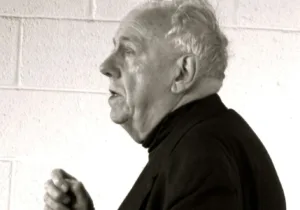
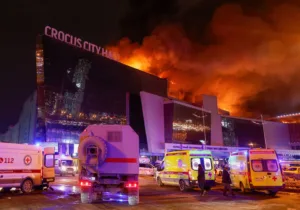
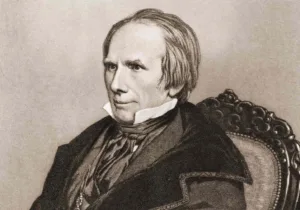
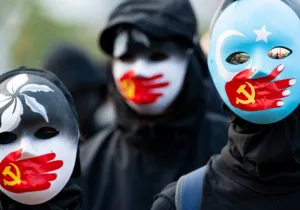
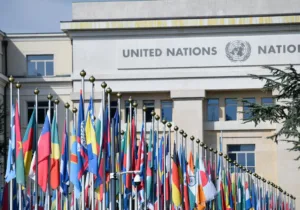

 Sponsor a student for Christianity & National Security 2024
Sponsor a student for Christianity & National Security 2024